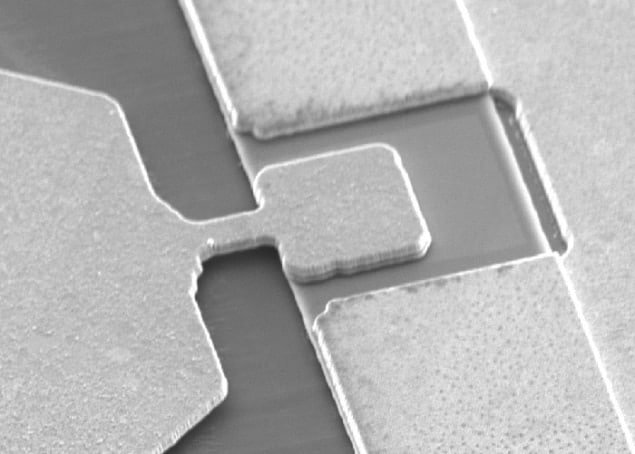
A technique to authenticate the identity of electronic devices using quantum tunnelling has been developed by researchers in the UK. The idea takes a problem in quantum electronics – the extreme sensitivity of the energy levels of a quantum well to its height and breadth – and turns it into an opportunity for creating a unique “quantum fingerprint” that is impossible to forge.
The secure exchange of electronic information is a cornerstone of modern society and security technology must be improved continuously to stay one step ahead of criminals and hackers. Password encryption is known to be vulnerable to cyber-attack. Where possible, it is far more secure to store data on hardware that has an identifying mark or feature that is random and therefore impossible to clone – a hi-tech version of a key. These marking systems are called physically unclonable functions (PUFs), and several have already been developed using the laws of classical physics. For example, the speckle pattern produced when a laser is incident on a surface is invariant, so the same surface will produce the same speckle pattern repeatedly; and yet it is impossible even for the manufacturer to produce another surface that will produce the same pattern. Other examples of such PUFs are modes in silicon ring oscillators and states of static random-access memories.
Forging ahead
As computers become more powerful, there is a real danger that criminals will find ways to reproduce the signature of such a device. In 2013, for example, Jean-Pierre Seifert and colleagues at the Technical University of Berlin produced a physical clone of a “unique” static random-access memory that, when tested, demonstrated identical responses to the original.
“Quantum devices all behave slightly differently, and that’s a big problem” Robert Young, Lancaster University
In the new research, experimental physicist Robert Young of Lancaster University has made his mark by exploiting a problem facing quantum technologists. Making practical quantum devices is very difficult because their performance is extremely sensitive to tiny imperfections introduced during manufacturing – imperfections that are much smaller than state-of-the-art manufacturing tolerances. “In a lab environment, on a one-off basis, [quantum devices] work fantastically well,” explains Young. “But when you want to make millions [of them], they all behave slightly differently, and that’s a big problem.” The researchers realized that this shortcoming is also a potential opportunity to create a device that is impossible to duplicate.
To exploit this opportunity, the researchers used resonant tunnelling diodes (RTDs) – quantum wells formed by sandwiching a layer of a conductor between two insulating gaps. The current through the diode depends on whether or not the potential difference across it is in resonance with the potential of one of the electronic energy levels in the well. The positions of these energy levels are sensitive to the atomic-scale variations of the atoms in the four interfaces on either side of the two barriers. These variations cannot be controlled using existing technology. The researchers manufactured 26 RTDs, all of which supposedly had identical specifications. However, when the researchers tested the voltage at which the peak current occurred and the maximum current through the diode at this peak, there was no overlap between the diodes.
Commercially sensitive
Straightforward circuitry exists for picking out a single resonant peak, says Young, so this technology could be commercialized by using multiple quantum wells, each with a different resonant peak. “This is standard semiconductor technology,” says Young. “You can make devices that are less than a micron squared, so you can easily make huge arrays of these identities.” The researchers have patented the technology, and they are currently looking at ways to exploit it in practice. Young describes the details as “commercially sensitive”, but he says that “these physically unclonable functions are already in use in many different markets, and all we’ve done is made one which is better – we think – than any that’s been made before”.
Jean-Pierre Seifert is intrigued. “All the PUFs so far presented that are manufacturable are clonable, either mathematically or physically,” he says. This one, he feels, is not clonable with available technology. However, he does have two concerns about the technology. Conceptually, he wonders whether the device truly relies on quantum mechanics as, although tunnelling is a quantum phenomenon, the positions of the resonances, though difficult to calculate, are still deterministic. More practically, he questions Young’s claim to be using standard semiconductor technology because, in the laboratory, the researchers grew the device by molecular beam epitaxy on an indium-phosphide substrate. “The question is whether a similar device can be manufactured in a standard CMOS process,” he says.
The research is published in Scientific Reports.



